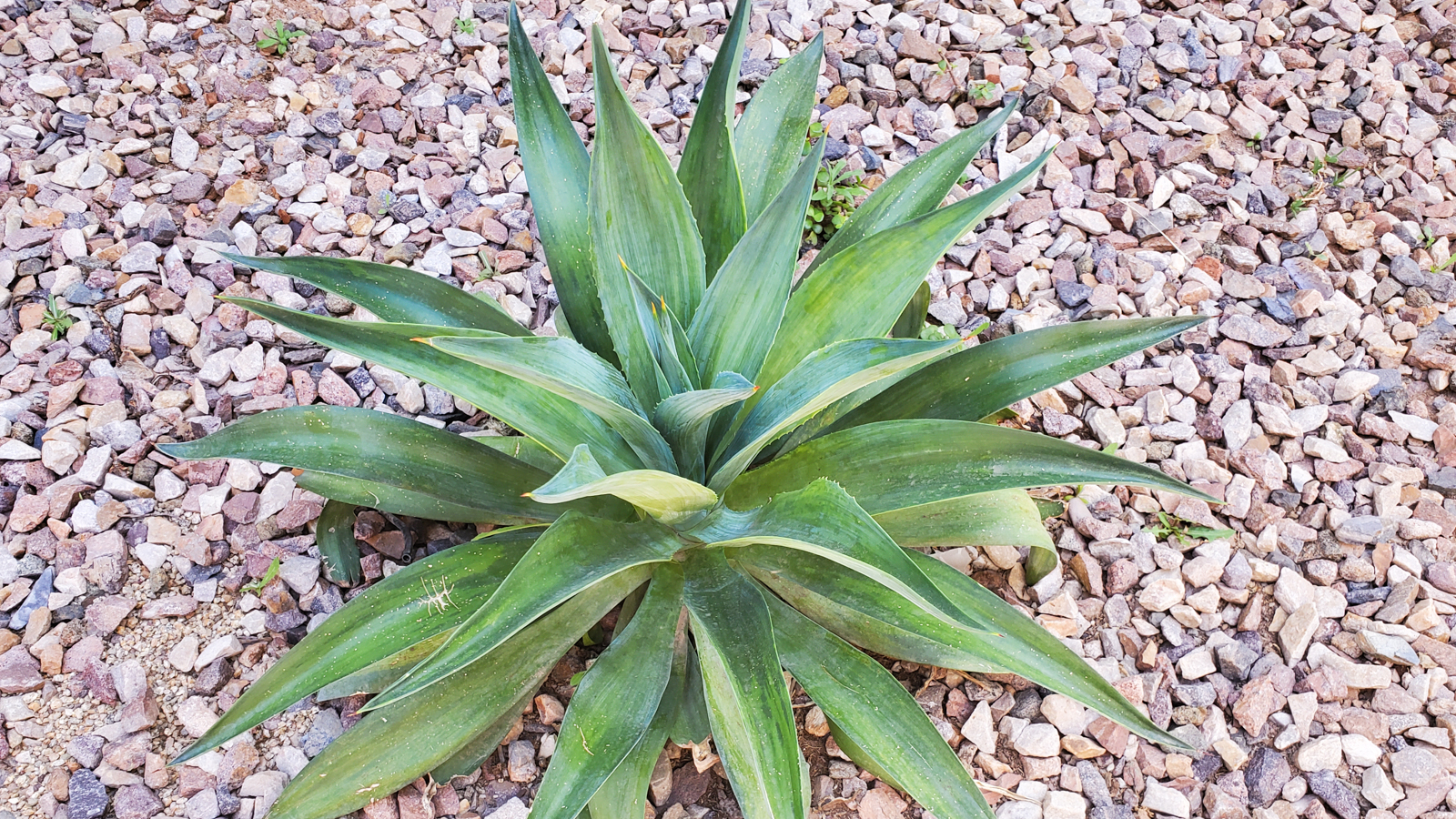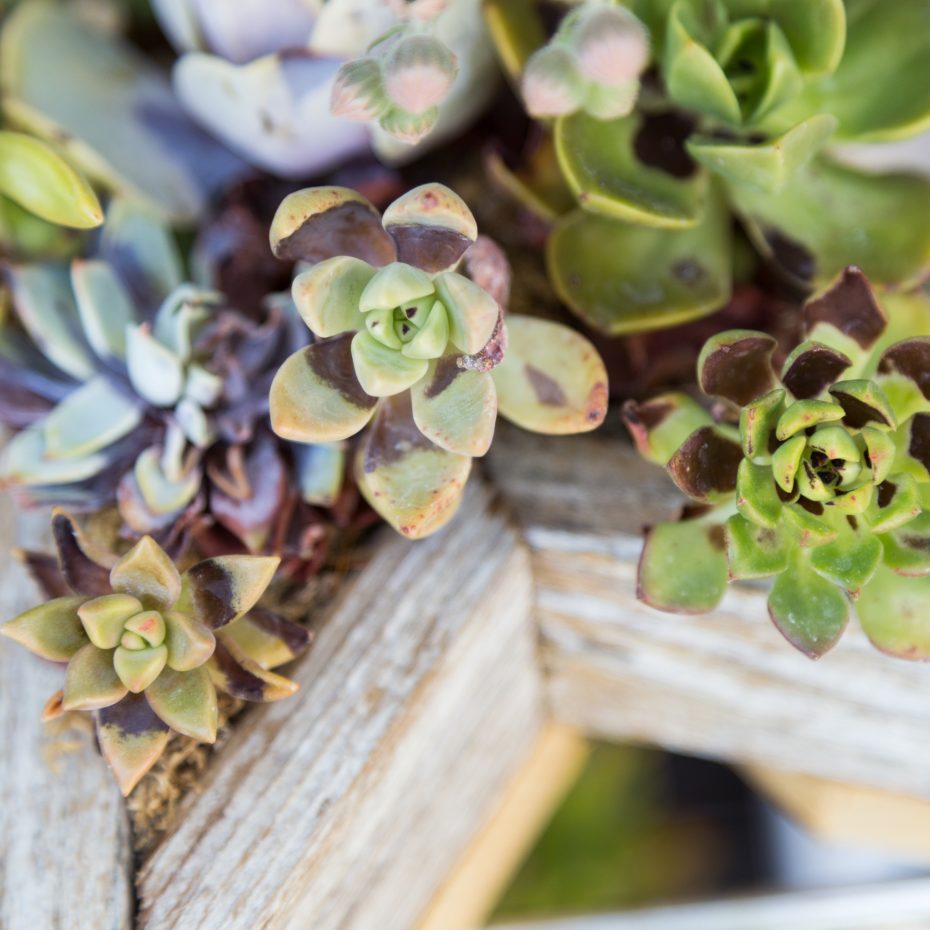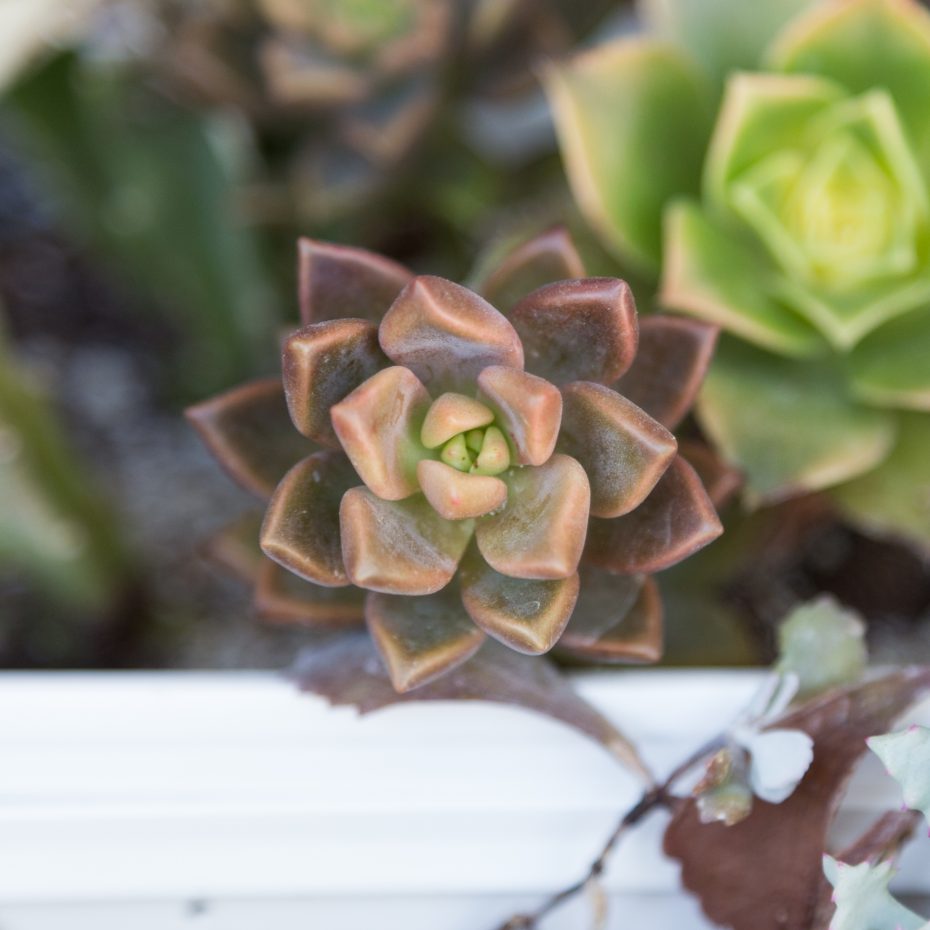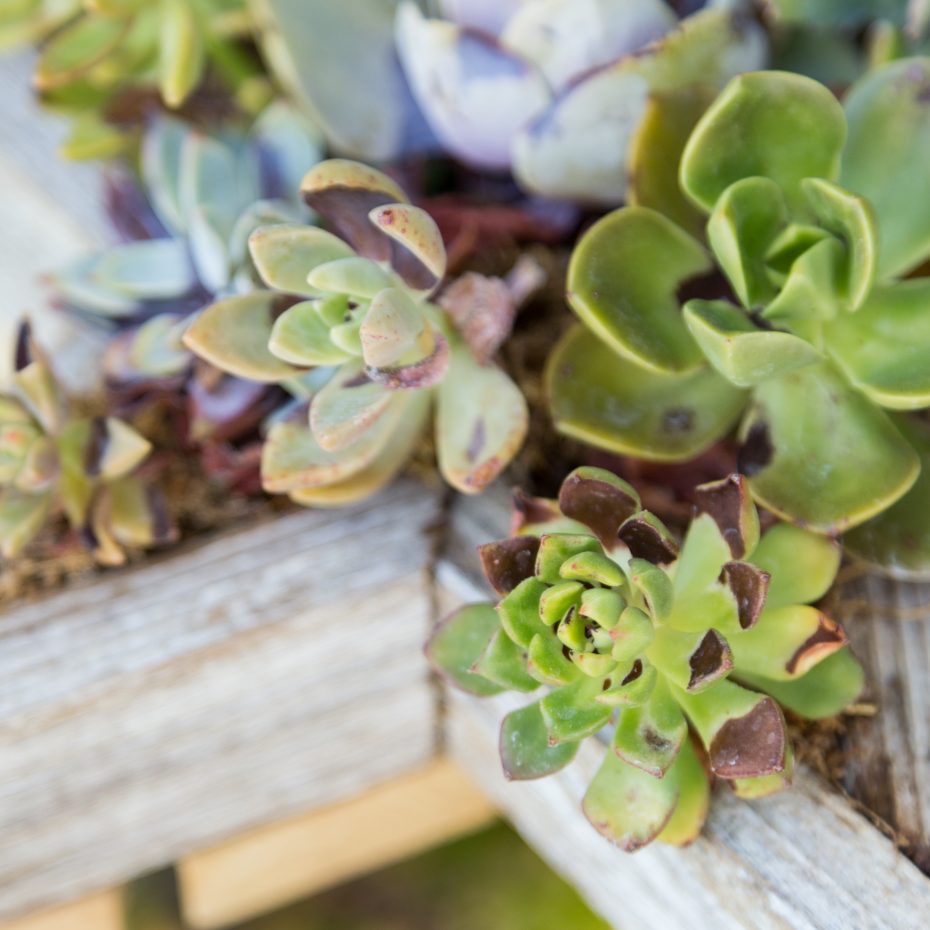Can Succulents Get Sunburn? How to Protect Your Plants
While succulents are drought tolerant plants, this doesn't necessarily mean they love the heat. Find out how much heat your succulents can tolerate!
I've had a lot of experience with succulents and heat. My succulents were outside for a summer where we had several consecutive days of temperatures over 100 (unusual for Utah). This definitely did some damage. And now that I live in Phoenix, Arizona... every summer is brutal.
So learn from my mistakes (and successes), and make sure you keep your succulents cool enough throughout the hottest weeks of summer.
When most people think of succulents they think of desert plants. While it's true that cacti (which are succulents) thrive in the desert, this is not always the case for all succulents.
Most succulents prefer the temperature to stay between 60 and 90 degrees. There are a few things that come into play with the amount of heat succulents will tolerate as well and I want to point those out for you.
Containers vs. Ground
All of my succulents are in containers. Most of them are in small pots. Most days the water in the pots dries out quickly, sometimes in a day or two, and my succulents are left bone dry.
As you can imagine, when the 100 degree weather sets in, it doesn't take long for the leaves to heat up and dry out or burn, especially if they are in direct sunlight.
Succulents that are in the ground naturally stay cooler because the ground doesn't heat up as quickly as pottery. Because of this, they can generally handle higher temperatures.

Newly planted succulents will still need some shade or protection to keep them cool as they begin to take root in the ground. Once their roots are more established however, they will be much more likely to tolerate high temperatures.
Direct Sun vs. Bright Shade
My succulent collection is on the east side of my house so it gets direct sunlight from sunrise until about 1:00 in the afternoon. That is a lot of direct sunlight!
When the temperatures get above 90, I've found I need to water my succulents every other day to keep the roots cool and the leaves plump.
Despite this frequent watering, the succulent leaves still get hot and I've had some but pretty badly. The intense light in combination with high temperatures can be brutal.
If you gradually introduce your succulents to the direct sunlight (increasing an hour or so every couple of days), most succulents will tolerate full sun most of the day.

I recently added some shade cloth to protect them from the direct sunlight. While the outside temperature is still above 90, the area surrounding the succulents is much cooler from the shade cloth.
And, without direct light shining on the plants the leaves don't get as hot and are unlikely to sunburn or show signs of too much heat.
Some succulents, such as Haworthias, prefer bright indirect sunlight all day. On the other hand most cacti can handle direct sunlight with no shade during the day. This is why it's important to know what types of succulents you own.
An interesting side affect of direct sunlight on some succulents is called “blushing” – the leaves will change color, sometimes to a deep red or purple.
Another great option is to simply place your succulents in an area that gets bright shade for most of the day. Ideally, they'll be in an area with an hour or two of morning sun, but then shaded the rest of the day.
Since the temperatures are generally higher in the afternoon, direct sunlight during this time can be problematic. Morning sun, on the other hand, is cooler and less likely to cause sunburn.
Extreme heat can be very problematic for a lot of succulents. While people think of succulents as desert plants, they don't all grow well in an extremely hot desert climate.
Keep the Soil Slightly Wet
While succulents don't like to sit in very wet soil, they are much less likely to suffer in intense heat if the ground is slightly wet or freshly watered. This helps keep the roots and therefore the rest of the plant cooler.
You still don't want to have your succulents in wet soil all the time, but I recommend watering at the beginning of the day so that the soil is wet during the warmest parts of the day.
Type of Succulent
Just as individual succulents vary slightly in water needs, they also vary in how much heat the like and tolerate. For example, most Aeoniums prefer cooler temperatures. They are winter growers so summer temperatures can cause problems for them during their dormant period in the summer.
Many Cacti tend to prefer warmer temperatures and do quite well in extreme heat. Aloes and Agaves also tend to tolerate heat fairly well.
The best way to determine how much sun and heat your succulent can tolerate is to do some research. Start by identifying your succulent (genera and species) and then do a search online to see what plant databases say about it.
If other people in your area are growing the same plant that is usually a sign that it can handle the temperatures of the area.
Age and Size of the Succulent
The larger a succulent is, the less likely it will be affected by hot temperatures.
A large plant is much stronger, has a deeper root system, and has likely had time to adjust to the warmer temperatures. While it's still possible for them to sunburn (especially if moved from shade to sun), it isn't as common.
Newly planted succulents and fresh cuttings will need a lot of extra attention if planted outdoors. They will need to be eased into the heat gradually. If left in 90 degree weather (or warmer) for too long, it's likely they will quickly burn and die.

Signs of Too Much Heat and Sun
It doesn't take long for succulents to start showing if they are stressed from too much heat or direct sunlight.
When succulents are getting the right amount of sun they'll often “blush” or change colors. This is such a beautiful transformation to see!
If they start to get too much sun however the leaves will actually burn. You may begin to notice white or pale patches on the succulent leaves. This damage cannot be reversed.
Instead, try to move your plant to an area with less hot, direct sunlight and wait for new leaves to grow. If only one or two leaves are damaged you can remove them, but it's not necessary.
In some cases the leaves will actually turn dry and black. The black will start on the outside edges of the leaves and will be dry and crispy (in contrast to blackening from rot which starts in the middle of the plant and is wet and mushy).
Again, this damage will not heal but will remain until the leaf completely dies and new leaves form.
If a succulent is in the shade but still experiencing really hot temperatures you may notice a golden/yellow color start to appear. The succulent doesn't turn completely white like it would with sunburn, instead the colors tend to look warmer or more yellow than usual.
This generally goes away, or the succulent will revert back to it's original color, if the succulent is moved to a cooler environment.

Sometimes I'm really good at keeping succulents alive, other times… not so much.
I recently made a move from Utah to Arizona. Moving to a new area is one of the things that makes succulent growing tricky. You have to really pay attention to the amount of sunlight and heat that various parts of your garden get.
Through an unfortunate amount of trial and error I've discovered there are some succulents that are much more heat and sun tolerant than others.
It’s a little embarrassing, but in the video below, I’m going to show you what my garden looked like when it got too much sun and heat.
Hopefully this example will teach you what mistakes to avoid so your garden doesn't end up the way mine did!
This article originally appeared on Succulents and Sunshine.